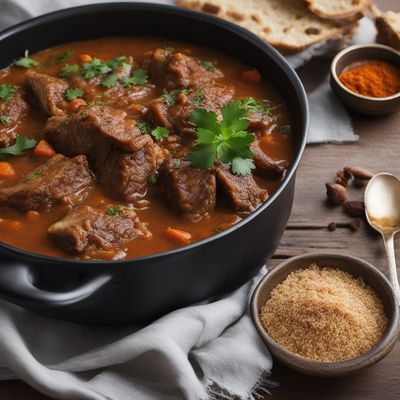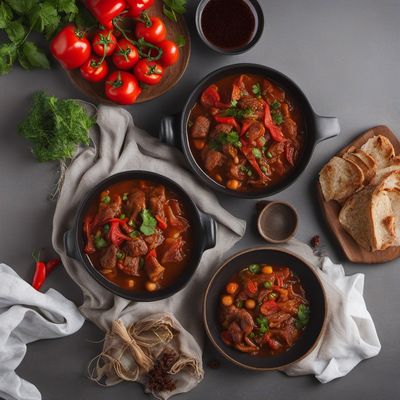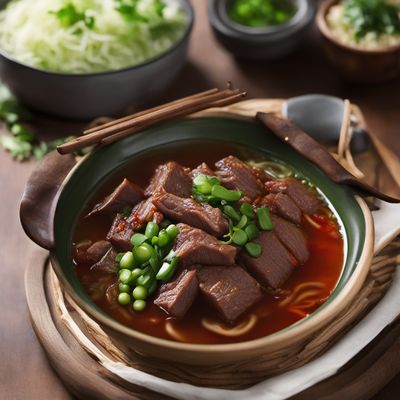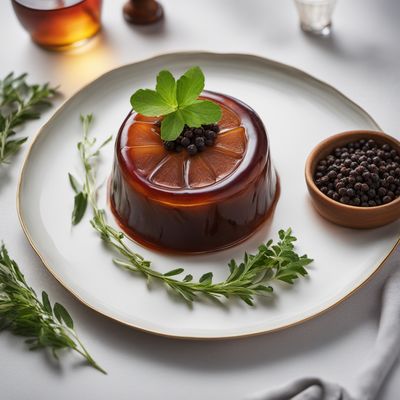
Ingredient
Bovine trotters and feet
Gelatinous Delights
Bovine trotters and feet are known for their gelatinous texture and rich collagen content. They have a mild flavor that absorbs the taste of the dish they are cooked in, making them perfect for adding depth and richness to soups, stews, and stocks.
Origins and history
Bovine trotters and feet have a long history of culinary use, particularly in traditional dishes like French pot-au-feu and Chinese braised trotters. They are often associated with comfort food and are considered a delicacy in many cultures.
Nutritional information
Bovine trotters and feet are a good source of collagen, which supports joint health and promotes skin elasticity. They are also rich in gelatin, which aids digestion and supports gut health.
Allergens
Bovine trotters and feet may contain allergens such as gelatin and collagen, which can cause allergic reactions in some individuals.
How to select
When selecting bovine trotters and feet, look for fresh cuts with a pinkish color and firm texture. Avoid any signs of discoloration, foul odor, or sliminess. Opt for organic or grass-fed options for better quality and flavor.
Storage recommendations
To maintain freshness, store bovine trotters and feet in the refrigerator at a temperature below 40°F (4°C). They can be kept for up to 3 days in the coldest part of the fridge. For longer storage, freeze them in airtight containers or freezer bags for up to 3 months.
How to produce
Bovine trotters and feet can be produced by raising cattle and slaughtering them for their meat. The trotters and feet are then cleaned, processed, and packaged for sale.
Preparation tips
Before using bovine trotters and feet, they need to be thoroughly cleaned and blanched to remove any impurities. They are commonly used in soups, stews, and stocks to add a rich, gelatinous texture. They can also be braised or slow-cooked to create tender and flavorful dishes.
Substitutions
Pork trotters can be used as a substitute for bovine trotters and feet, although they have a slightly different flavor profile. Gelatin or collagen powder can be used as a vegetarian substitute for the gelatinous texture.
Culinary uses
Bovine trotters and feet are commonly used in dishes like oxtail soup, beef stew, and jellied meat dishes. They are also a key ingredient in traditional dishes like Mexican menudo and Filipino kare-kare.
Availability
Bovine trotters and feet are commonly available in countries with a strong culinary tradition, such as France, China, Mexico, and the Philippines.
More ingredients from this category

Bovine stomach
The Gastronomic Delight: Bovine Stomach

Bovine marrowbone
The Rich Essence of Bone Marrow

Bovine tail
"The Hidden Gem: Exploring the Richness of Bovine Tails"

Bovine tongue
The Versatile Delicacy: Bovine Tongue

Bovine heart
The Culinary Powerhouse: Exploring the Versatility of Bovine Heart
Recipes using Bovine trotters and feet

Iraqi-Style Siri Paya (Lamb Trotters Stew)
Hearty Iraqi Lamb Trotters Stew: A Delightful Taste of Tradition

Tajik Mocotó Soup
Savory Tajik Mocotó: A Hearty Delight from the Mountains

Chilean Harvest Stew with Butternut Squash and Beans
Autumn Delight: Chilean Harvest Stew with Butternut Squash and Beans

Filipino-style Callos
Hearty Beef Stew with a Filipino Twist

Mocotó Stew
Savory Delight: Brazilian Mocotó Stew

Guizhou-style Beef Trotter Soup
Spicy and Nourishing Beef Trotter Soup with Guizhou Flavors

Sicilian Pata Soup
Savor the Sicilian Delight: Pata Soup with a Mediterranean Twist

Ox Trotter Aspic
Gelatinous Delight: British Ox Trotter Aspic

Fast Food Ox Trotter Aspic
Savory Gelatin Delight: Fast Food Ox Trotter Aspic